PV yield test projects are one of the most important ways to evaluate the performance of PV modules and PV systems, and thus have attracted extensive attention from the industry in recent years. JA Solar and TÜV Rheinland recently reported the results of a one-year energy yield test at the national outdoor yield test base for PV products in Qionghai, Hainan, China. The test aimed to study and verify the power generation performance of different types of modules, especially n-type modules and p-type modules.
1. Project Information
The field test project is located in Qionghai, Hainan, which is typical of a tropical monsoon climate with a hot and humid environment. Average annual peak hours are about 1550kWh/m
2 (horizontal level), average annual sunshine hours are about 2155 hours, and the average annual temperature is about 24℃. The field test project is shown in Figure 1.
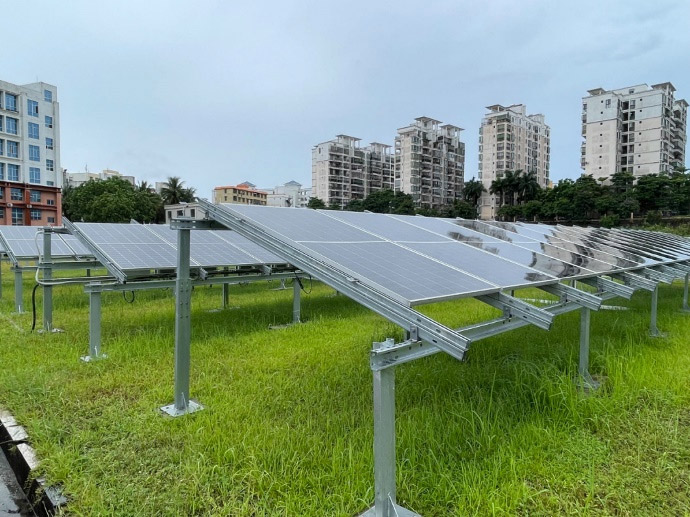
Figure 1: The field test project run by JA Solar and TÜV Rheinland
The field test plant is equipped with a set of DeepBlue 4.0 series n-type bifacial modules (with Bycium+ cell based on n-type passivated contact technology, hereafter referred to as n-type modules) and a set of p-type PERC bifacial modules (hereafter referred to as p-type modules), with installed power of approximately 5kW (as measured by the lab) for each set and an inverter of 6kW for each set. The project used a fixed support installation method (tilt Angle 19°), with the long frame of the module fixed on the vertical purlin, to ensure that the back of the module is not shielded. The module is about 1 meter above the ground. In addition to the environmental monitoring system, the project was equipped with high-precision irradiance meters, high-precision DC meters and temperature sensors.
For the PV system design and module energy yield analysis, only data from the DC meter was used for the analysis in order to avoid the effect of inverters on the power generation performance of different modules.
2. Comparison of power generation performance
From February 2023 to July 2023, the energy yield performance of n-type modules and p-type modules are shown in Figure 2. The average daily energy yield of these two modules was 4.32kWh/kW and 4.20kWh/kW respectively, with n-type modules surpassing the p-type modules by about 2.9%. The power generation capacity of PV modules depends on power degradation, temperature coefficient, operating temperature, bifacial generation performance, low irradiance performance, etc. While both types of modules are based on half-cut bifacial solar cells, the energy yield difference are mainly due to cell technology performance.
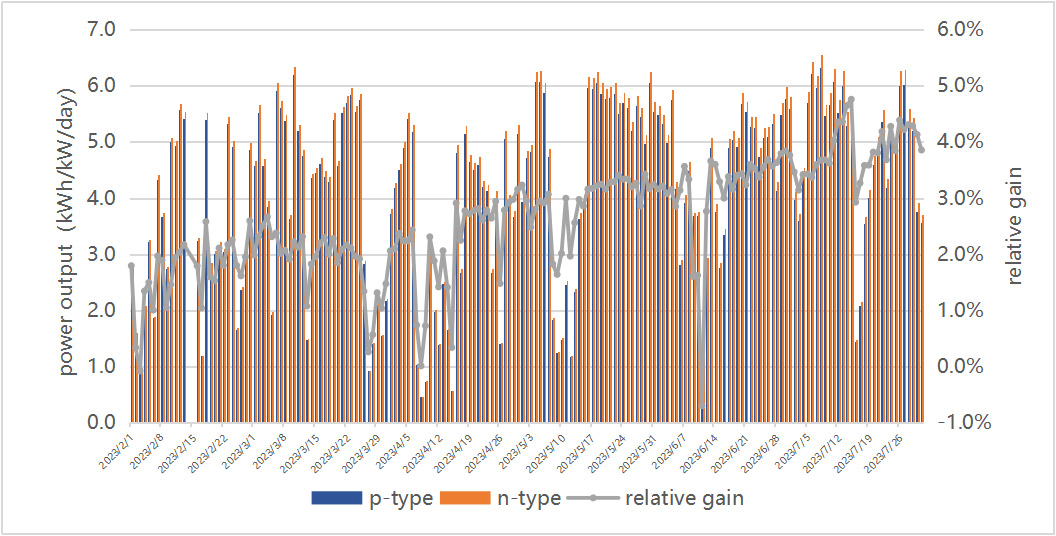
Figure 2: Data compared between n-type module and p-type PERC module
Regarding power degradation, due to the natural advantage of n-type modules for LID-free and better LeTID performance versus p-type modules, JA Solar provides a 30-year linear power output warranty with less than 1% degradation in the first year and less than 0.4% annual degradation in the following years. Calculations show power generation gain in the service lifetime to be up to 1.8% and first-year degradation data shows power gain of up to 1%.
As for high temperature energy yield performance, mainly related to the temperature coefficient and module operating temperature, theoretically higher cell open-voltage means better temperature coefficient. The open-circuit voltage of n-type Bycium+ cell can reach 725mV, and temperature coefficient of n-type modules is -0.3%/℃, while p-type modules is -0.35%/℃. During hot weather days, assuming module operating temperature is 55℃ (ambient temperature 30℃), power degradation loss of n-type modules is 1%-1.5% lower than p-type modules. With module operating temperature continually increasing, high temperature performance of n-type modules will be significantly better. At the same time, due to the higher conversion efficiency of the n-type modules, the heat conversion of the absorbed light energy is correspondingly reduced, thereby reducing the operating temperature of the modules. Combined with the excellent temperature coefficient and low operating temperature, the power generation of n-type modules is about 1.5-2% higher than that of p-type modules under high temperature conditions.
Furthermore, the n-type module has 80% bifaciality which is much higher than the 70% of p-type modules. Assuming irradiance under the rear side is 100~150 W/m
2 condition, the 10% bifaciality difference can bring n-type module energy gain 1%~1.5%, when in different ground environment (albedo of 20%-30%), combined with different array height, front and rear array spacing, and backside mounting with or without shading, the n-type module's power generation gain ranges from 0.8% to 1.2%.
As for the low irradiance energy yield performance, mainly with a shorter carrier lifetime, open-circuit voltage, sheet resistance, under 600W/m
2 conditions, such as morning or night fall, simulation shows the n-type energy yield gain to be about 0.2%.
3. Analysis of factors affecting n-type energy yield gain
In different climatic conditions, different weather conditions, different project types, and different ground environments, the power generation gain of n-type modules was also different than that of p-type modules. JA Solar Yinchuan one-year outdoor field test data (JA Solar and TÜV North, in the CPVT Yinchuan National PV outdoor field test Base from February 2021 to February 2022) shows that the energy yield of n-type modules based on Bycium+ cell is about 3.9% higher than that of p-type modules, and the energy yield gain is about 3.5% from February to July, which is slightly higher than that of the Hainan field test project.
From February 2021 to July 2021, the daily energy yield of the n-type module in Yinchuan is 5.31kWh/kW, and from February 2023 to July 2023, the daily energy yield of the n-type module in Hainan is 4.32kWh/kW. In the nearly same months in the past two years, the daily energy yield of Yinchuan's field test n-type module is about 23% higher than Hainan's field test, which is mainly caused by the difference of irradiance resources between the two sites. In the following, the energy yield data of two sunny days (high irradiance, July 7 and July 13) and two cloudy days (low irradiance, February 26 and April 12) of the Hainan field test project are selected for comparative analysis, as shown in Fig. 3. By normalizing the instantaneous power of the measured power of the module in the lab, it can be clearly seen that the energy yield gain of the n-type module is relatively larger when the irradiance is higher, which is 4.01% and 4.06% on July 7 and July 13, respectively. When the irradiance is lower, the n-type module energy yield gain is relatively smaller, which is 1.60% and 1.32% on February 26 and April 12, respectively. The above data shows that when the irradiance is high, excluding the influence of other factors, the n-type module's power energy yield gain is larger. The ground albedo and array height of Yinchuan field test and Hainan field test are basically the same, and the difference in energy yield gain mainly depends on the intensity of irradiance, the comparison data of the two projects further proves the n-type module's excellent power generation performance.
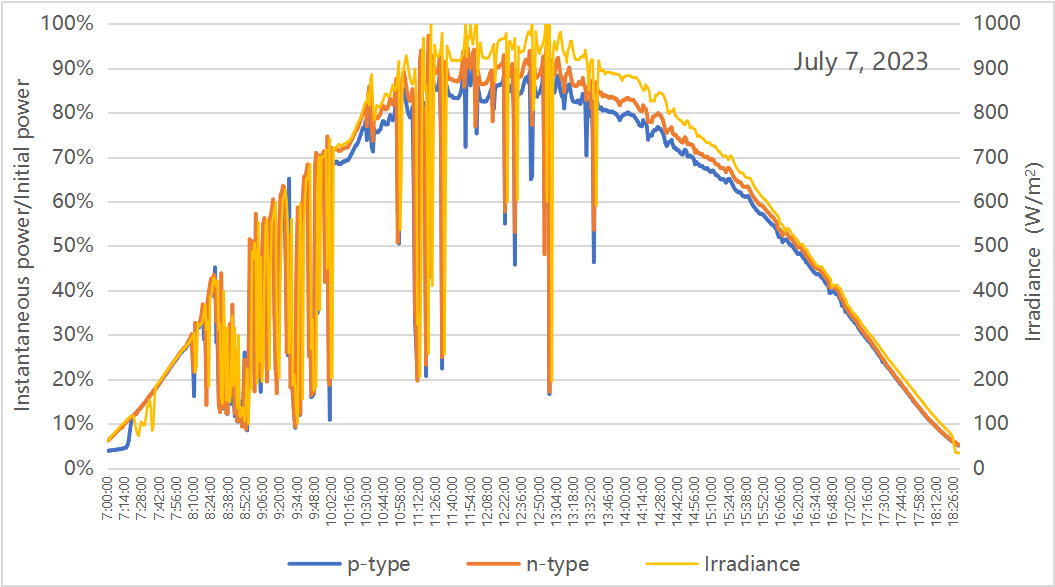
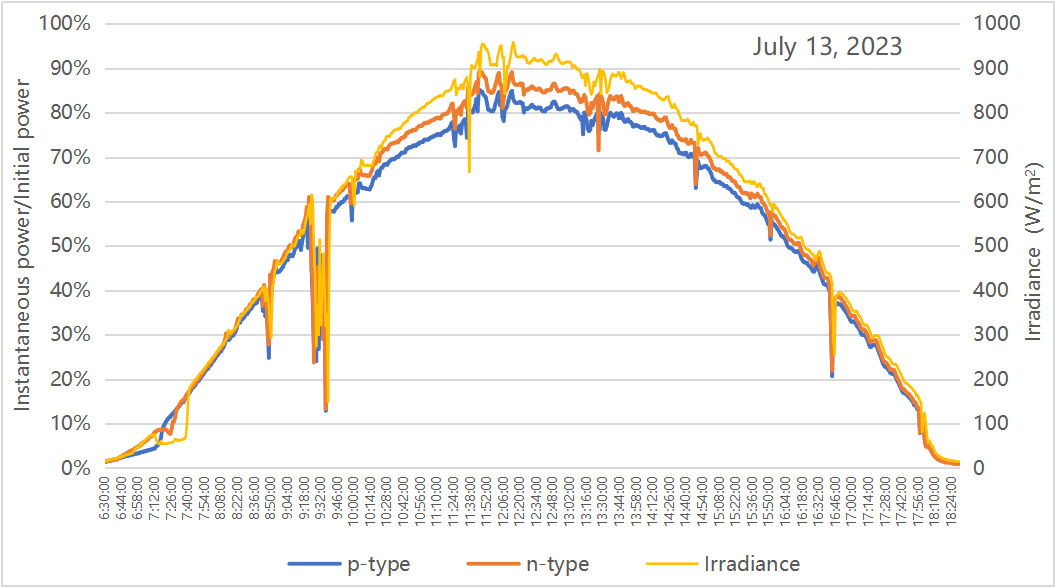
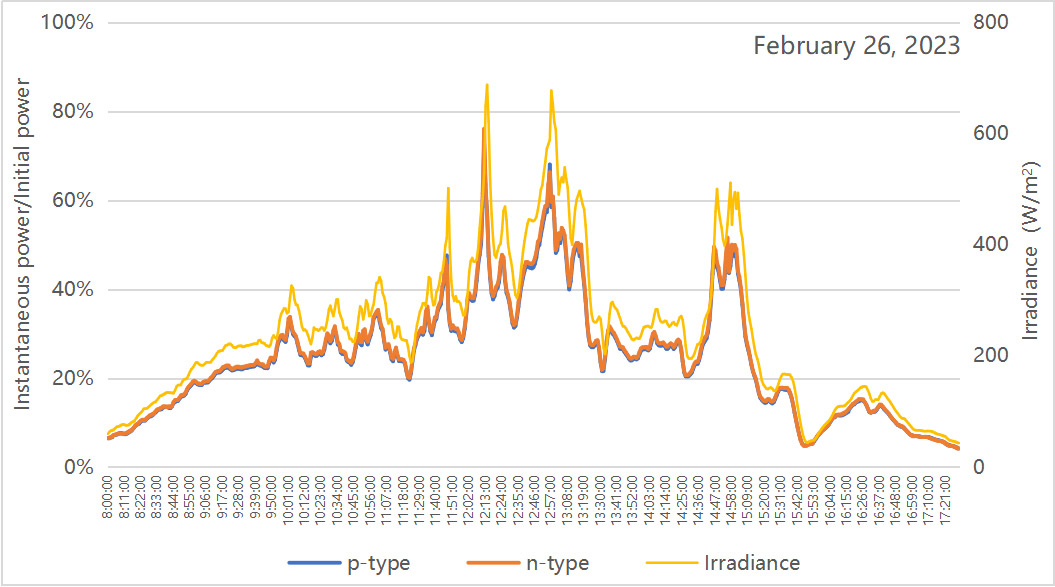
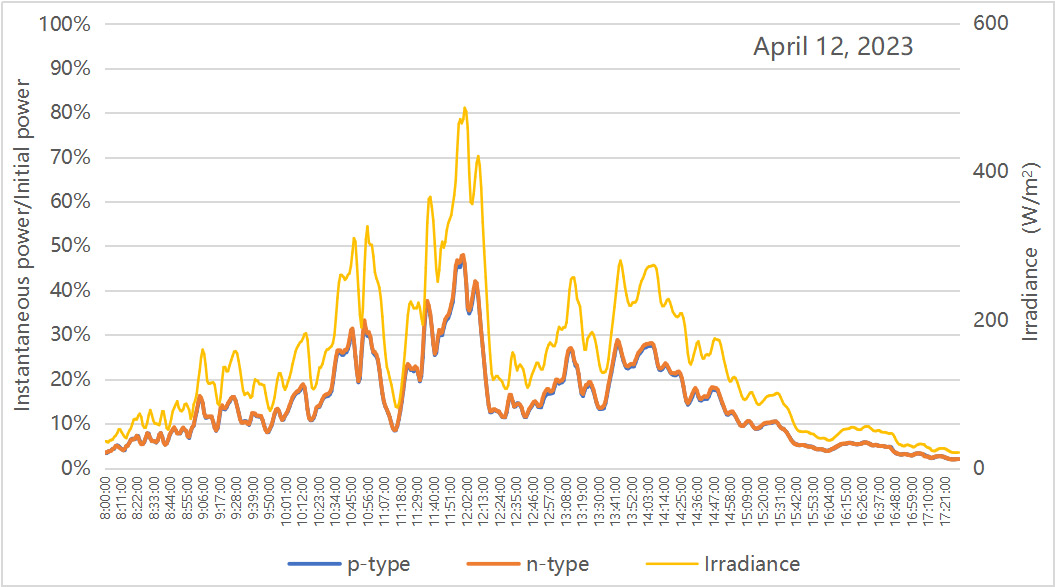
Figure 3: Power energy yield gain data of n-type modules under different irradiance in Hainan field test project
From February 2023 to July 2023, we tested the power generation capacity of n-type modules and found it to be about 2.9% higher than that of the p-type modules—under theoretical analysis—mainly due to the superior power degradation, higher temperature yield, bifacial energy yield performance, and low irradiance yield features of the DeepBlue 4.0 series modules. Under high irradiance conditions, the energy yield gain of n-type modules is more prominent, so the power generation performance is better for n-type modules in high irradiance environment and high temperature areas. This field test will be continuously tracked in the future, and will provide the technical basis for the selection of PV product technical roadmaps and module selection for customers.





